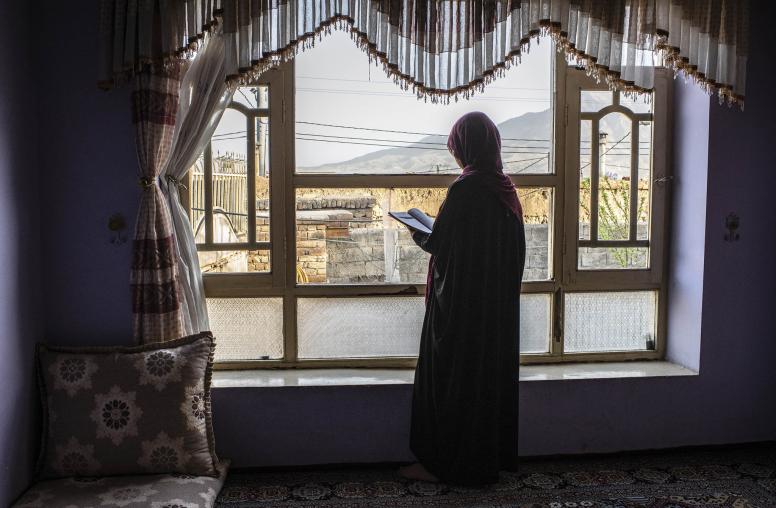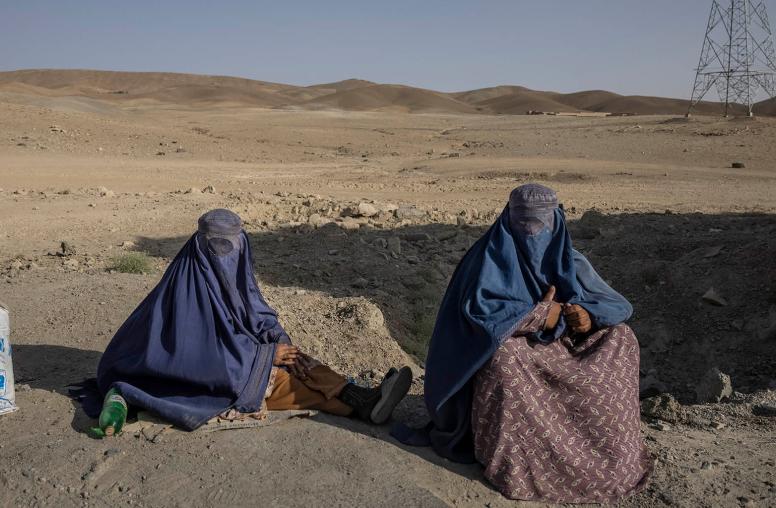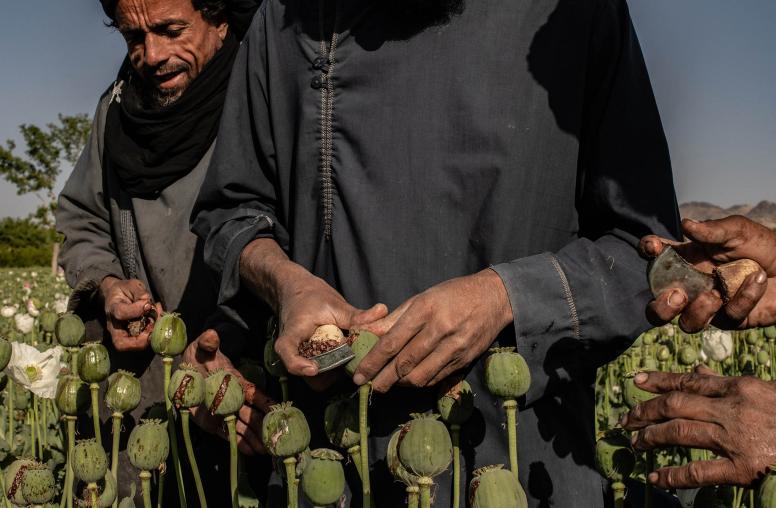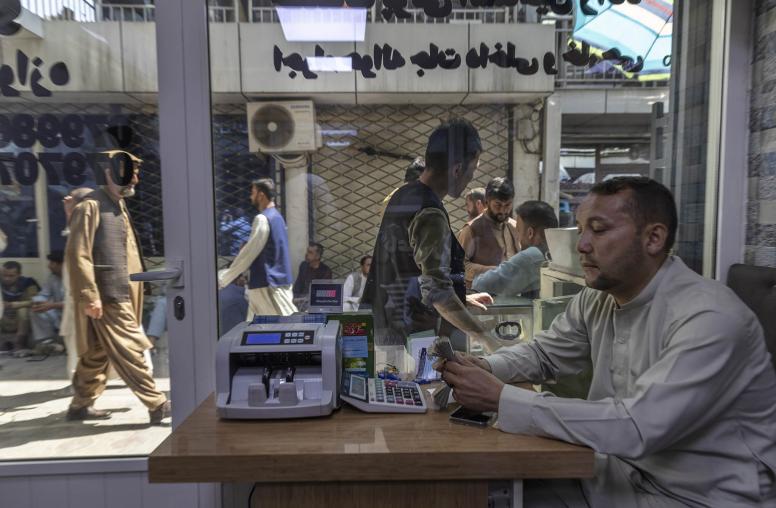Amid a Spike in Violence, Have Afghan Peace Talks Lost Momentum?
The Afghan government is calling for a cease-fire to facilitate intra-Afghan dialogue, but the Taliban has yet to agree.
After rapid progress in early 2019, the Afghan peace process has seemingly slowed. The U.S. chief negotiator, Ambassador Zalmay Khalilzad, said in May that his negotiations with the Taliban were making slow but steady progress, but there has been little headway in starting talks among the various Afghan parties. Meanwhile, violence has ratcheted up, as typically occurs in the spring and summer in Afghanistan. The country’s overdue presidential polls are scheduled for late September, further complicating efforts to achieve peace. Can talks succeed amid the violence and political discord? Will the elections drain momentum from the peace process? USIP’s Johnny Walsh looks at the Afghan peace process ahead of the next round of talks in late June.

The U.S.-Taliban negotiations seemed to speed ahead in early 2019, but more recently the Taliban have refused to move on to talks with their fellow Afghans. Has the process stagnated?
Talks did indeed lurch forward after Ambassador Khalilzad became U.S. special representative for Afghanistan reconciliation in September 2018, following years with little progress. The U.S. and Taliban hammered out the broad contours of two issues: the timetable for a U.S. troop withdrawal, and the steps the Taliban will take against terrorists on Afghan soil. The U.S. position, however, is that no agreement will be final until it also addresses two other issues: a cease-fire and a political settlement among Afghans themselves. The Taliban for now maintain their years-long refusal to negotiate these or any other issues with the Afghan government, which they call illegitimate.
A breakthrough nearly occurred in April, when a planned meeting in Qatar among Taliban negotiators and a diverse slate of Afghan leaders—including from the Kabul government—collapsed at the last minute, mostly over disagreements between the Taliban and government over the size and composition of the delegation that would come from Kabul. Both the Taliban and Afghan President Ghani faced blame for the collapse, with many observers believing either that Ghani’s real aim in sending an unrealistically large delegation was to delay the peace process until after his hoped-for reelection later this year, that the Taliban objected to it because they aspire only to negotiate an American withdrawal, or both. No serious negotiations among the Afghan government, Taliban, and other Afghan leaders have yet occurred. The approach of Afghanistan’s presidential election, scheduled for September 28, has moreover drawn attention away from peace efforts as the campaign season approaches.
At the same time, the rapid progress of early 2019 was probably the exception rather than the rule, and serious peace efforts continue. Peace negotiations are almost always lengthy, complex, and prone to dramatic ups and downs. The U.S. and Taliban continue to inch closer to an understanding on the U.S. presence and counterterrorism issues. At least two efforts are underway to reconvene the various Afghan factions—one led by Germany and Qatar to revive the canceled April meeting, and another in Moscow that has gathered many rival factions but not (to date) the Kabul government. Each party still professes openness to talking, and there has not yet been a major breakdown on a substantive issue. The government is calling for a cease-fire to facilitate intra-Afghan dialogue, but the Taliban is so far unwilling to support even limited cease-fires.
What about Afghanistan’s presidential election this year—won’t that drain the momentum out of peace talks?
There are undeniable tensions between peace efforts and the election. One is the risk that the election, like most in Afghanistan, will be fraud-ridden and prompt a political crisis, which might encourage the Taliban to further destabilize the Afghan state rather than try to negotiate with it. Another is that even a legitimate election will inflame political rivalries among the groups that would do better to negotiate with the Taliban with one voice. Still another is that a newly elected (or reelected) president might feel little desire to pursue a deal with the Taliban that might require him to step down short of his five-year term. In a worst-case scenario, a failed election that produces no legitimate outcome could shake the pillars of the Afghan state and leave it deeply vulnerable to a Taliban onslaught. At the very least, the election campaign will distract the same Afghan leaders who would also be necessary for a peace deal.
At the same time, the intra-Afghan part of the peace process is at such a preliminary stage that it should not be impossible for quiet but useful work to begin. In one scenario, representatives from different Afghan constituencies could begin to map the broad outlines of a potential political settlement, even knowing it will not be ready until long after the election. In another, these talks could aspire to a nearer-term framework agreement that would not address every major issue, but might lay out some form of political transition in a way that could affect the election timeline. In still another, the major presidential campaigns could each place a trusted representative on any negotiating team, so that each has some voice at any table.
Any of these scenarios would be difficult in the best of times, and they are more so during campaign season. As with many hurdles in this peace process, though, the alternative is much worse. If intra-Afghan discussions freeze in anticipation of the election, they might not resume until well into spring 2020, given the strong chance the election will prompt a lengthy political crisis and/or a second round of voting. By this time, the U.S. administration may seriously consider withdrawing U.S. troops from Afghanistan with or without a peace agreement in place, which could mean chaos and widespread suffering across Afghanistan. Time therefore remains of the essence.
Violence in Afghanistan is extremely high right now. Does that mean the Taliban aren’t serious about peace?
The Taliban and all other parties to this conflict understand the principle of “fight and talk”—that there is a war ongoing, and that no belligerent will pull its punches on the battlefield even if it is negotiating sincerely at a faraway table. Indeed, many parties in other peace processes actually increase military efforts in order to maximize leverage ahead of any settlement, and the Afghan process has already survived numerous high-profile attacks, national offensives, and killings of senior leaders on each (Afghan) side. It will experience more such violence under any scenario, and it would be a mistake to assume insincerity based solely on the fact of the Taliban or any other party attempting to improve its position on the battlefield.
The violence does hamper efforts to make a deal, however, and cease-fires are needed at some point for any political process to advance. It worsens a climate of mistrust, and a desire for vengeance on all sides. The fact that the Taliban have grown slightly stronger every year since at least 2014 gives many of its leaders incentive to bide their time and hope for a battlefield victory, or at least a better negotiating position. The ongoing danger to U.S. forces in Afghanistan is one reason a withdrawal would likely be politically popular in the U.S., however devastating it might prove in Afghanistan—and however much a post-withdrawal collapse might return to bite the U.S. in the future, not least by making the region more hospitable to international terrorist groups like ISIS.
Above all, however, the fact that Afghanistan has reclaimed its sorry former position as the world’s most violent conflict shows the urgency of ending the war. Thousands more will die in this year’s military campaign, and nearly every year is bloodier than the last. With no side able to win anytime soon, the only way out is a peace deal, and 2019 holds the best opportunity in nearly two decades to achieve one.



